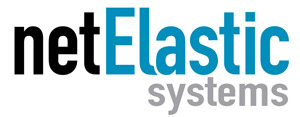Many people are hesitant to make changes, since it’s much easier to stay with the status quo. There is a comfort level in the familiar. For example, I typically go out for lunch on the weekends. And I typically go to the same restaurants over and over again. Why? I’m familiar with those establishments. I know them and they know me.
The downside is I’m missing out on opportunities to try new restaurants, which may have better food, more enjoyable atmospheres, and lower prices than the current restaurants I patronize. That’s the price I pay for not trying something new.
As I mentioned, it’s easier to stay with the status quo. However, there is no status quo with bandwidth demand. It continues to increase.
According to OpenVault’s most recent Broadband Insights Report, average North American bandwidth consumption surpassed 512 GB, or over half a terabyte (TB) for the first time ever. That’s half a terabyte! The rise in bandwidth consumption was accompanied by greater adoption of higher-speed broadband tiers. Naturally, as subscribers demand faster and faster speeds, the more bandwidth subscribers will consume.

Broadband Network Gateways
The never-ending increase in bandwidth consumption is motivating many broadband providers to re-evaluate their legacy hardware-based routers. This includes their broadband network gateways (BNGs), a critical network component that aggregates traffic from many subscribers and routes it to the network of the service provider. BNGs also enable service providers to authenticate and authorize users to establish and manage subscriber sessions, and ensure users receive the appropriate services.
Traditional hardware-based BNGs are very difficult to scale elastically, and thus can’t support continual increases in bandwidth demand. But what if you’ve been using hardware-based BNGs for quite some time and are familiar with them. Is it hard to switch to a virtual BNG?
Deploying vBNGs
Virtual BNGs are software-based solutions, which make them easy to deploy. Traditional BNGs run on proprietary hardware, while vBNGs use software running on high-performance x86 servers. By eliminating proprietary hardware, broadband providers can quickly and easily deploy vBNGs.
Software-based BNGs can also be located at the network edge (closer to subscribers), so broadband providers can maximize throughput and low-latency applications. In addition, vBNGs can be deployed on virtual machines or bare-metal servers. vBNGs also have the same protocol support as legacy BNGs, so interoperability isn’t an issue.
Don’t Forget the Cost Savings
The significant cost savings associated with vBNGs also makes it easy to switch. Legacy BNGs from router manufacturers bundle BNG software with their proprietary hardware, which increases costs. The significant upfront costs of hardware appliances are made worse by their lack of scalability, which forces broadband providers to purchase additional hardware-based BNGs when their capacity limit is reached.
Software-based BNGs run on standard x86 servers, which lowers costs. vBNGs running on commodity servers also benefit from the rapid price reductions seen in commercial x86 hardware.

An Easy and Affordable vBNG
As a pioneer in network virtualization, netElastic was one of the first companies to develop a software-based BNG which runs on commodity x86 servers. netElastic vBNG separates the control plane and data plane so each can be scaled independently of each other, enabling flexible capacity expansion without restrictions from either plane. The data plane is also optimized to deliver maximum performance on x86 platforms.
Customers have found it easy to succeed with netElastic vBNG. INTECH, an internet service provider (ISP) based in Las Vegas, chose netElastic vBNG after evaluating many vendors. According to Leonard Jenkins, CTO, INTECH, “netElastic vBNG was easy to set up and to operate.” In addition, INTECH was able to use their existing hardware with netElastic software, which made the transition even easier and saved a considerable amount of money.
Praction Networks is another broadband service provider offering some of the fastest internet speeds in India. Praction was using a Cisco ASR 1002 router as a BNG, and was struggling with its lack of scalability. Rohit Kumar, Co-Founder and CTO at Praction, said, “We constantly had to configure our previous router, which was becoming very tedious,” commented Rohit. “netElastic’s software-based BNG eliminated this problem, since it’s very easy to configure with only a few software commands.”
Staying with the familiar may seem like a safe choice. But relying on the familiar for our networking decisions may deprive us of much better choices. As bandwidth demand continues to increase, deploying vBNGs can deliver greater flexibility and scalability, while also lowering costs. To learn more, please read our white paper on “Next Generation vBNGs: Is Your Broadband Network Ready?”

